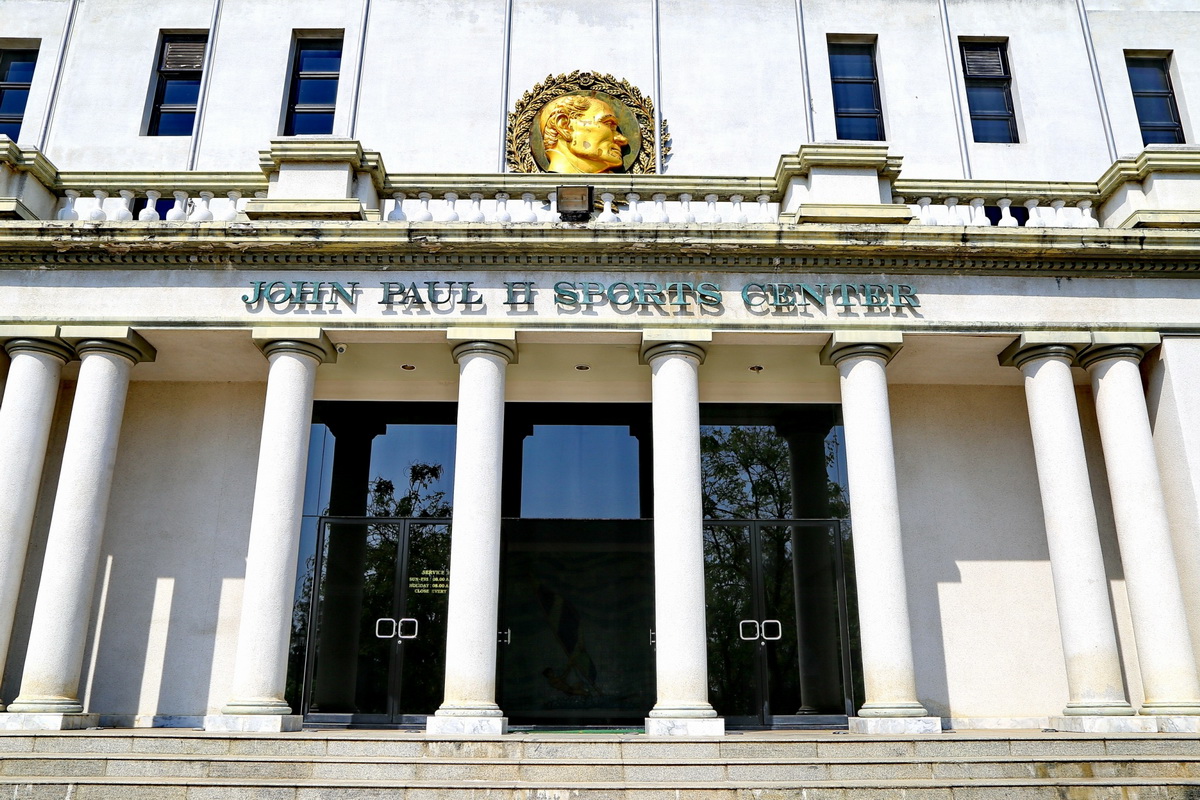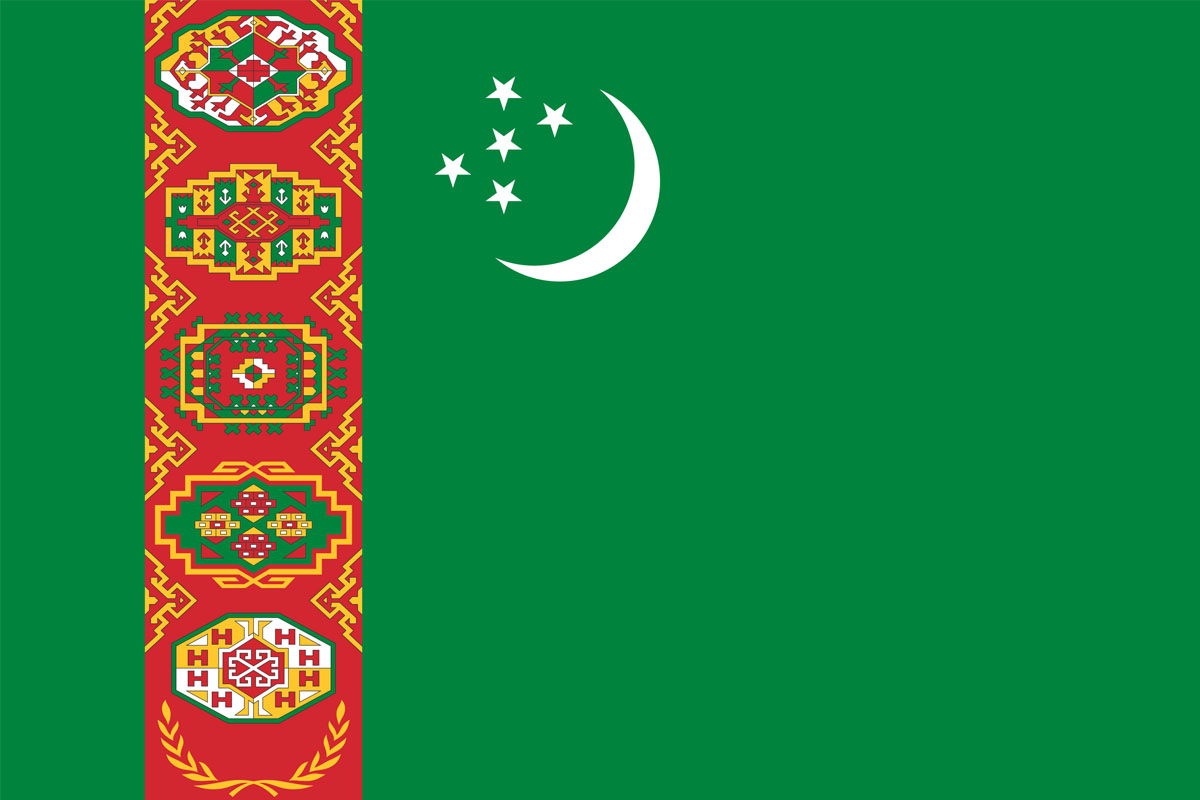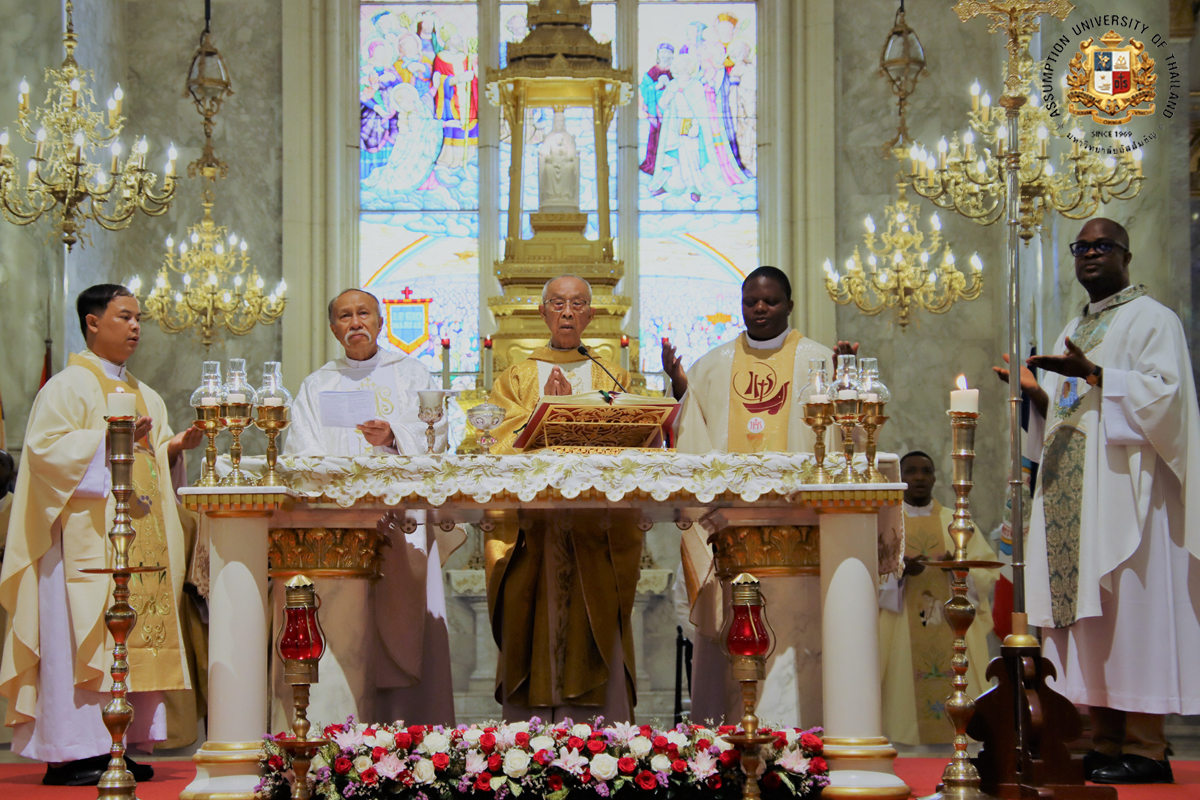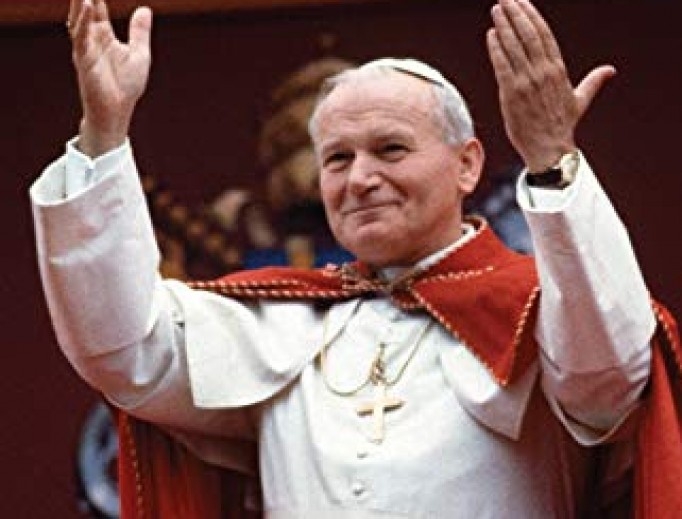
Karol Józef Wojtyła, elected Pope on 16 October 1978, was born in Wadowice, Poland, on 18 May 1920.
He was the third of three children born to Karol Wojtyła and Emilia Kaczorowska, who died in 1929. His elder brother Edmund, a physician, died in 1932, and his father, Karol, a non-commissioned officer in the army, died in 1941.
He was nine years old when he received his First Communion and eighteen when he received the Sacrament of Confirmation. After completing high school in Wadowice, he enrolled in the Jagellonian University of Krakow in 1938.
When the occupying Nazi forces closed the University in 1939, Karol worked (1940-1944) in a quarry and then in the Solvay chemical factory to earn a living and to avoid deportation to Germany.
Feeling called to the priesthood, he began his studies in 1942 in the clandestine major seminary of Krakow, directed by the Archbishop Adam Stefan Sapieha. During that time, he was one of the organizers of the "Rhapsodic Theatre", which was also clandestine.
After the war, Karol continued his studies in the major seminary, newly reopened, and in the school of theology at the Jagellonian University, until his priestly ordination in Krakow on 1 November 1946. Father Wojtyła was then sent by Cardinal Sapieha to Rome, where he attained a doctorate in theology (1948).
He wrote his dissertation on faith as understood in the works of Saint John of the Cross. While a student in Rome, he spent his vacations exercising pastoral ministry among Polish emigrants in France, Belgium and Holland.
In 1948, Father Wojtyła returned to Poland and was appointed a curate in the parish church of Niegowić, near Krakow, and later at Saint Florian in the city. He was a university chaplain until 1951, when he again undertook studies in philosophy and theology. In 1953, Father Wojtyła presented a dissertation at the Jagellonian University of Krakow on the possibility of grounding a Christian ethic on the ethical system developed by Max Scheler. Later he became professor of moral theology and ethics in the major seminary of Krakow and in the theology faculty of Lublin.
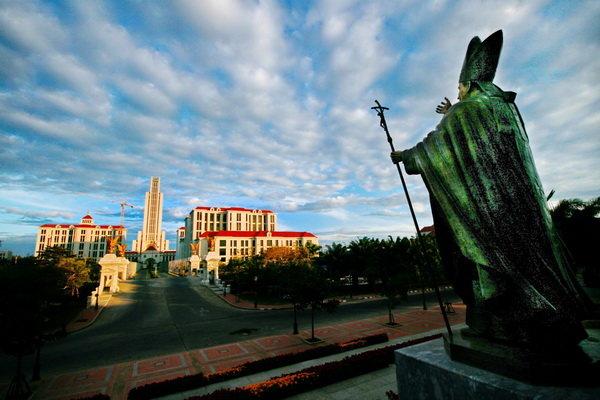
On 4 July 1958, Pope Pius XII appointed Father Wojtyła auxiliary bishop of Krakow, with the titular see of Ombi. Archbishop Eugeniusz Baziak ordained him in Wawel Cathedral (Krakow) on 28 September 1958.
On 13 January 1964, Pope Paul VI appointed Bishop Wojtyła as Archbishop of Krakow and subsequently, on 26 June 1967, created him a Cardinal.
Bishop Wojtyła took part in the Second Vatican Council (1962- 1965) and made a significant contribution to the drafting of the Constitution Gaudium et Spes. He also took part in the five assemblies of the Synod of Bishops prior to the start of his Pontificate.
On 16 October 1978, Cardinal Wojtyła was elected Pope and on 22 October he began his ministry as universal Pastor of the Church.
Pope John Paul II made 146 pastoral visits in Italy and, as the Bishop of Rome, he visited 317 of the current 322 Roman parishes. His international apostolic journeys numbered 104 and were expressions of the constant pastoral solicitude of the Successor of Peter for all the Churches.
His principal documents include 14 Encyclicals, 15 Apostolic Exhortations, 11 Apostolic Constitutions and 45 Apostolic Letters. He also wrote five books: Crossing the Threshold of Hope (October 1994); Gift and Mystery: On the Fiftieth Anniversary of My Priestly Ordination (November 1996); Roman Triptych, meditations in poetry (March 2003); Rise, Let Us Be on Our Way (May 2004) and Memory and Identity (February 2005).
Pope John Paul II celebrated 147 beatifications, during which he proclaimed 1,338 blesseds, and 51 canonizations, for a total of 482 saints. He called 9 consistories, in which he created 231 Cardinals (plus one in pectore). He also presided at 6 plenary meetings of the College of Cardinals.
From 1978, Pope John Paul II convoked 15 assemblies of the Synod of Bishops: 6 ordinary general sessions (1980, 1983, 1987, 1990, 1994 and 2001), 1 extraordinary general session (1985) and 8 special sessions (1980, 1991, 1994, 1995, 1997, 1998 (2) and 1999).
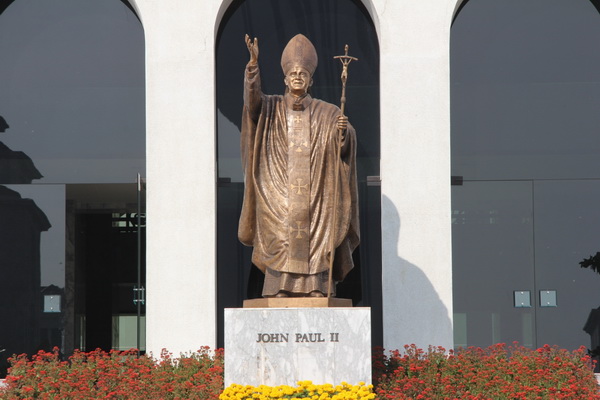
On 3 May 1981, an attempt was made on Pope John Paul II's life in Saint Peter's Square. Saved by the maternal hand of the Mother of God, following a lengthy stay in the hospital, he forgave the attempted assassin and, aware of having received a great gift, intensified his pastoral commitments with heroic generosity.
Pope John Paul II also demonstrated his pastoral concern by erecting numerous dioceses and ecclesiastical circumscriptions, and by promulgating Codes of Canon Law for the Latin and the Oriental Churches, as well as the Catechism of the Catholic Church. He proclaimed the Year of Redemption, the Marian Year and the Year of the Eucharist as well as the Great Jubilee Year of 2000, in order to provide the People of God with particularly intense spiritual experiences. He also attracted young people by beginning the celebration of World Youth Day.
No other Pope met as many people as Pope John Paul II. More than 17.6 million pilgrims attended his Wednesday General Audiences (which numbered over 1,160). This does not include any of the other special audiences and religious ceremonies (more than 8 million pilgrims in the Great Jubilee Year of 2000 alone).
He met millions of the faithful in the course of his pastoral visits in Italy and throughout the world. He also received numerous government officials in audience, including 38 official visits and 738 audiences and meetings with Heads of State, as well as 246 audiences and meetings with Prime Ministers.
Pope John Paul II died in the Apostolic Palace at 9:37 p.m. on Saturday, 2 April 2005, the vigil of Sunday in albis or Divine Mercy Sunday, which he had instituted. On 8 April, his solemn funeral was celebrated in Saint Peter's Square and he was buried in the crypt of Saint Peter's Basilica.
John Paul II was beatified in Saint Peter's Square on 1 May 2011 by Pope Benedict XVI, his immediate successor and for many years his valued collaborator as Prefect for the Congregation for the Doctrine of the Faith.
He was canonised on 27 April 2014, together with Pope John XXIII, by Pope Francis.
Sources:
John Paul II. (n.d.). https://bit.ly/3ar7wP4
John Paul II. (n.d.). https://www.vatican.va/content/john-paul-ii/en.html
Biographical profile John Paul II (1920-2005) https://www.vatican.va/content/john-paul-
ii/en/biografia/documents/hf_jp-ii_spe_20190722_biografia.html
At Assumption University of Thailand
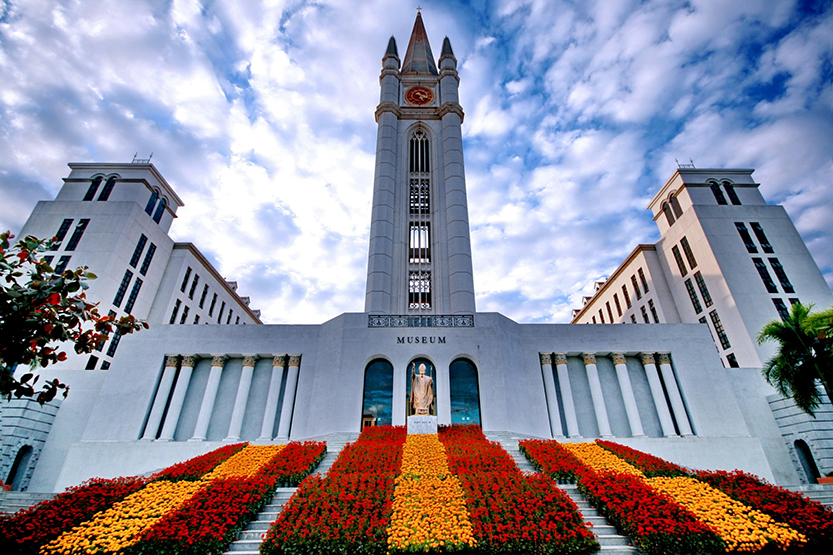
The Bronze Statue of Pope John Paul II
The John Paul II Center for Catholic Social Thought was established and inaugurated on January 29, 2007 with the unveiling and blessing of the John Paul II bronze statue by two Cardinals, their Eminences Renato Raefele Martino and Michai Michael Kitbunchu at the entrance of the Assumption University of Thailand’s Museum, at the Suvarnabhumi Campus.
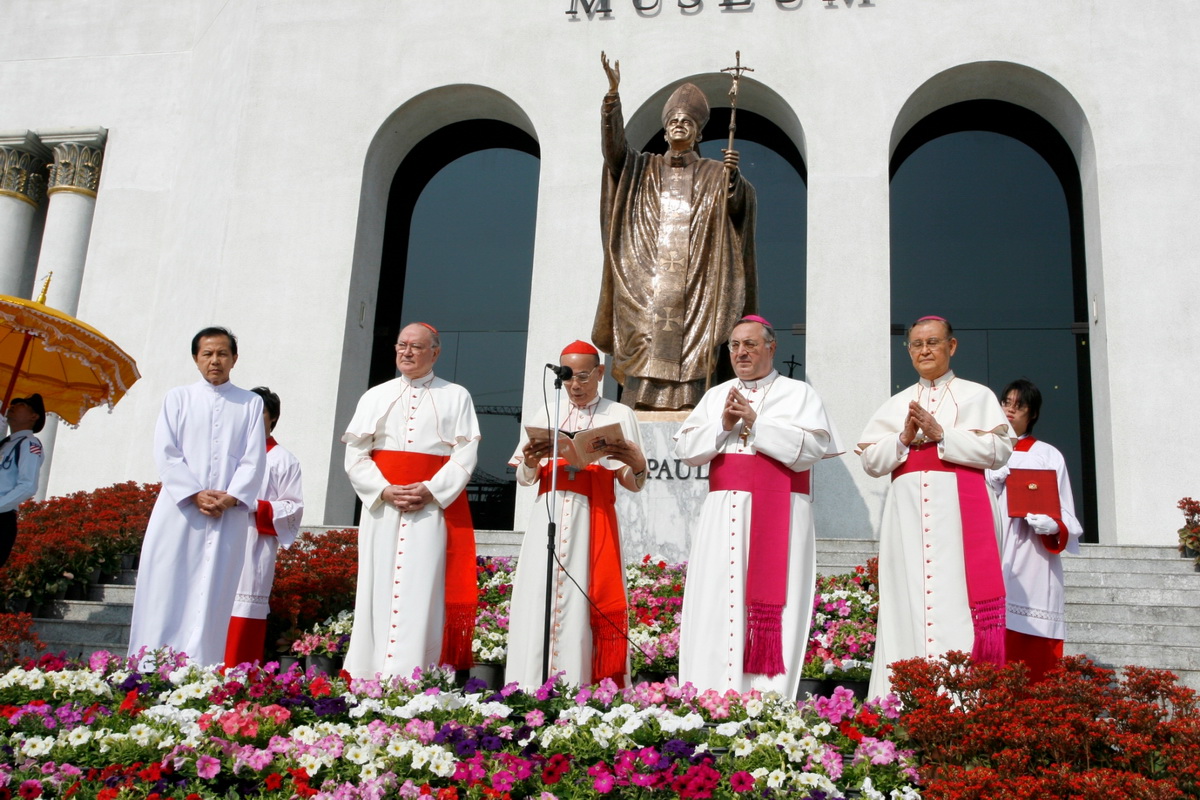 |
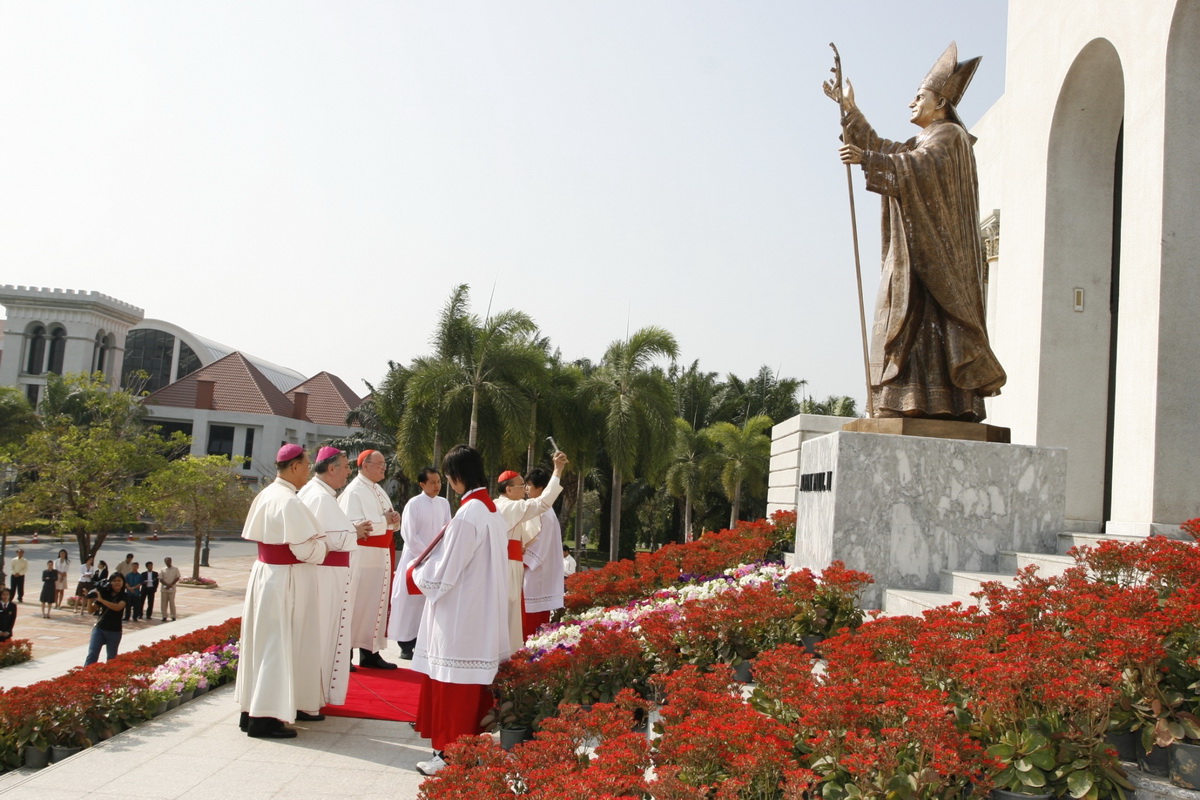 |
The Rationale of placing the statue on the campus was to honor the life and work of Pope John Paul II who had raised the levels of awareness in the Catholic Church towards concerns of social justice and peace.
The Bronze statue of John Paul IIassumed higher significance and meaning when the late Pope was canonized on 27 April 2014 (Divine Mercy Sunday), together with John XXIII. The first University veneration of the newly canonized Pope’s statue was led by the University’s President-Rector Magnificus Rev. Brother Dr. Bancha Saenghiran, early in May 2014.
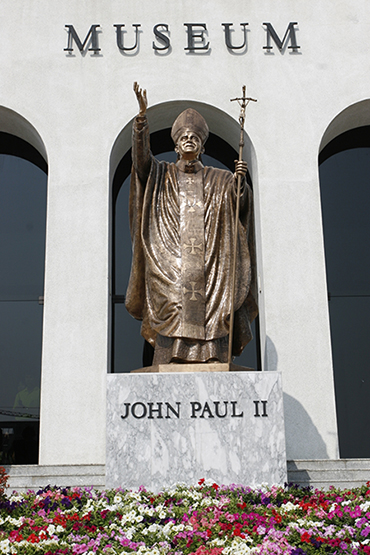
The Sculpture of Pope John Paul II
Height: 3.26 meters
Weight: 960 MI
Material: Bronze
Sculptural Processes:
1. The model was made by skilled sculptor. Wax is the material in this process and it took 25 days.
2. The block was checked by the President Emeritus of Assumption University.
3. The process of preparing sculpture model The casting process took 49 days.
Number of modeling and casting team provided by Ajarn Prawat Raksiam:
Making model of the sculpture 4 people
Casting the sculpture 35 people
John Paul II Sports Center
The John Paul II Sport Center on the campus of Assumption University Suvarnabhumi campus was so named by Rev. Brother Prathip Martin Komolmas, the Rector Emeritus to commemorate the passion and skiing skills of the late Saint Pope John Paul II who was dubbed by Journalists as "The Daredevils of the Tartars" for his adroit skills in Skiing, typefying the skill and ability to ski in the mountains of Poland where the Pontiff loved to ski.
John Paul II Sports Center was founded for the purpose of forming graduates who are ‘healthy and open-minded persons, characterized by personal integrity, an independent mind, and creative thinking,’ which is part of the University’s original vision. John Paul II Sports Center was first constructed on 10 April 2001 and was completed on 30 May 2002. It features a main gymnasium, a badminton gymnasium, a swimming pool, three football fields, and six tennis courts including:
- A basketball court with 2,800-seat grandstands on all four sides and a digital scoreboard in an air-conditioned venue;
- A fitness center equipped with many modern weight machines and fitness machines;
- A snooker room with three snooker tables;
- Two squash courts;
- Four indoor badminton courts;
- A 25x25 meter indoor swimming pool.
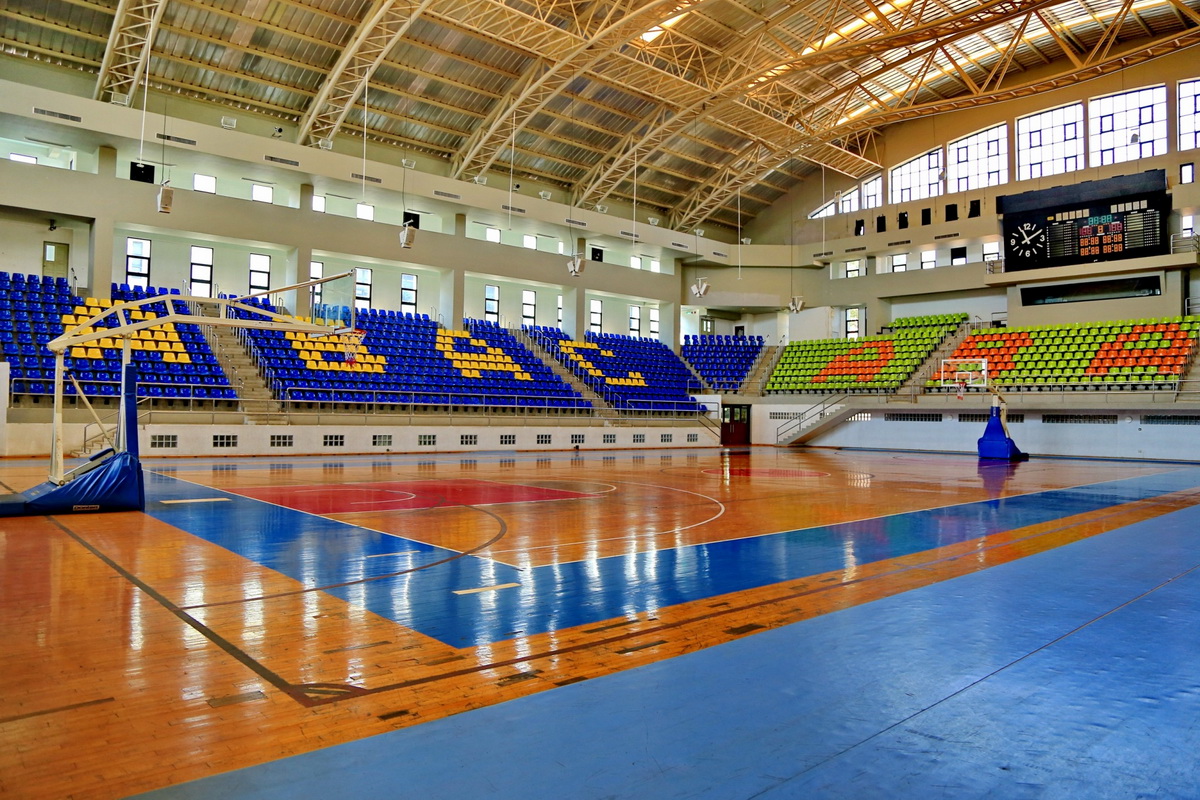 |
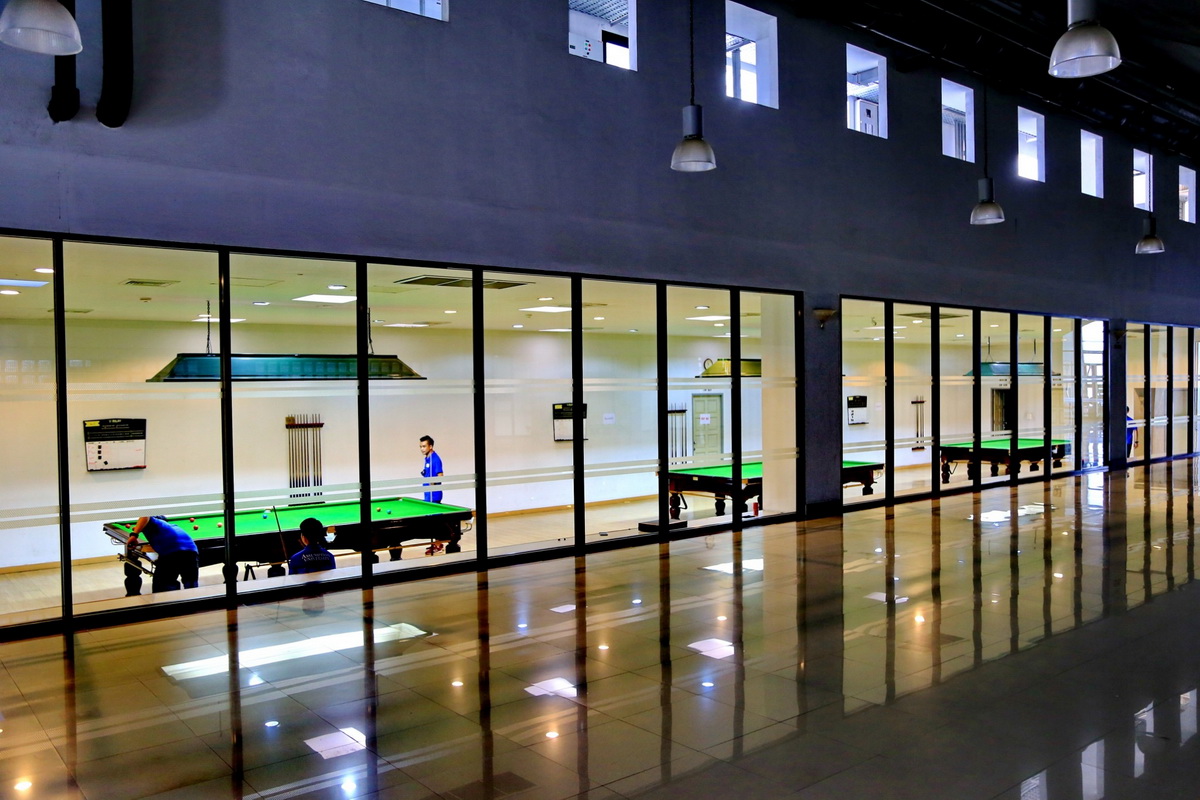 |
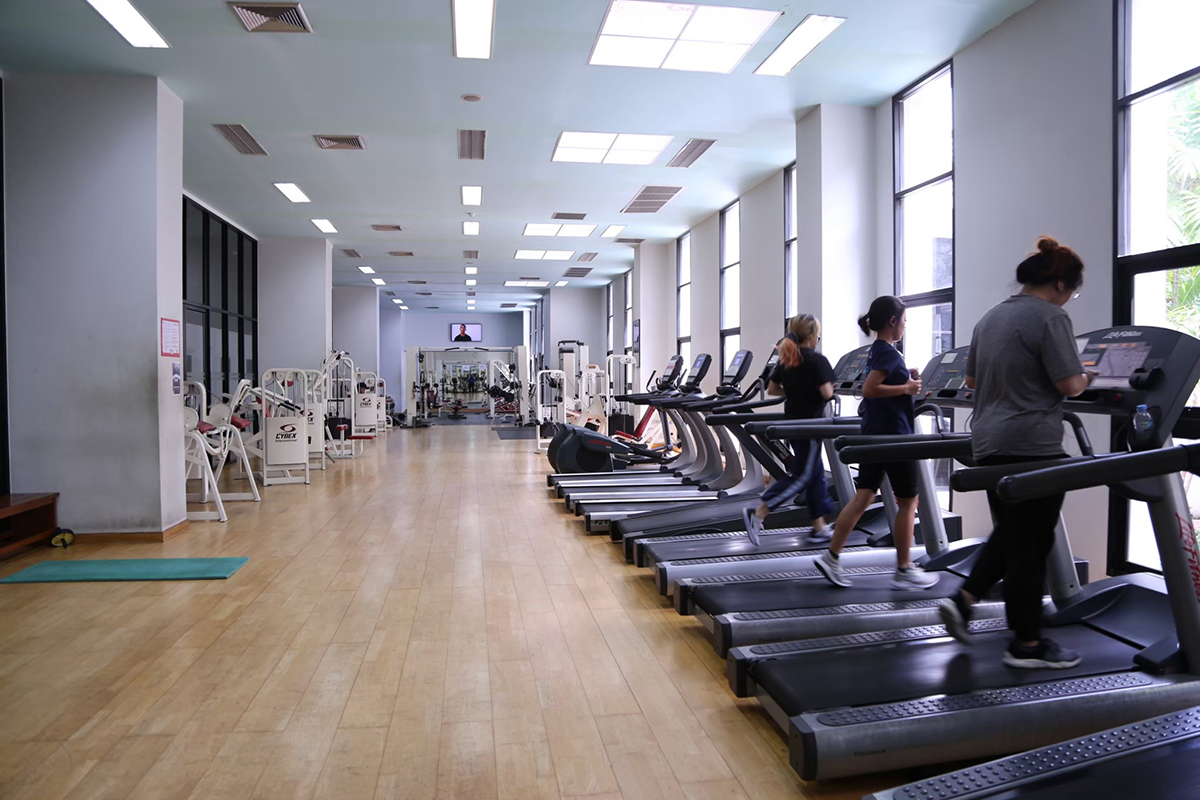 |
